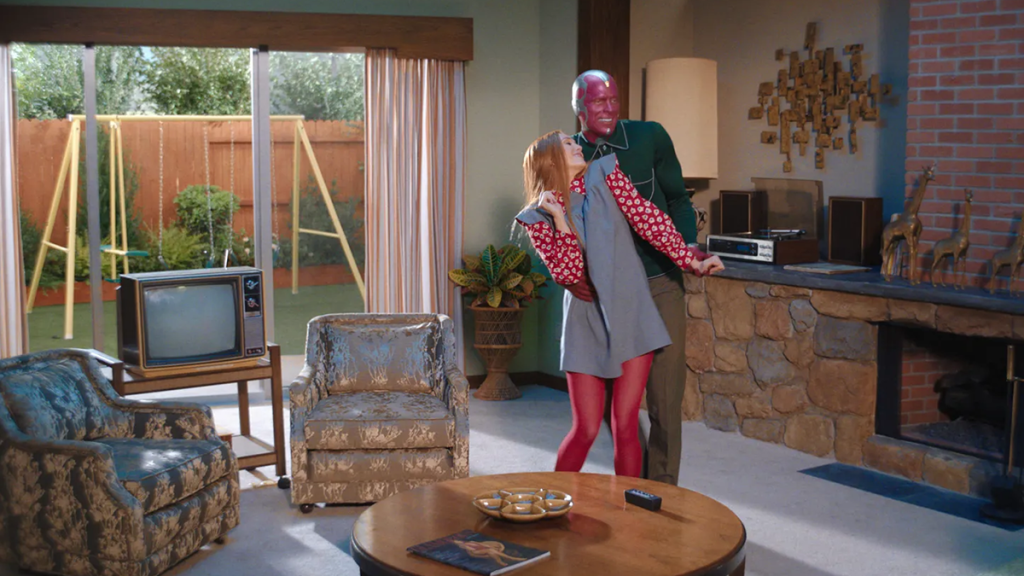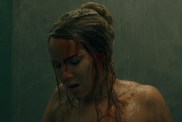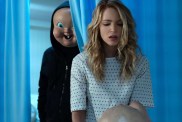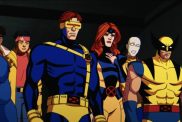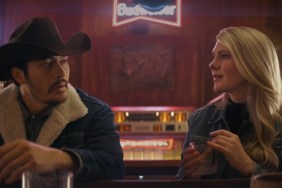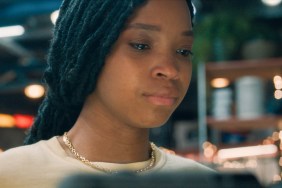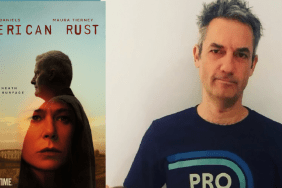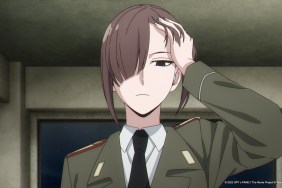ComingSoon Editor-in-Chief Tyler Treese spoke with WandaVision set decorator Kathryn Orlando to celebrate the 4K release of the first Disney+ Marvel Cinematic Universe series. Orlando spoke about the process of designing sets from different eras and her work on the original Iron Man movie. WandaVision is now available to purchase on 4K UHD and Blu-ray SteelBook.
“Living idealized suburban lives, super-powered beings Wanda and Vision begin to suspect that everything is not as it seems,” reads the series‘ synopsis.
Tyler Treese: WandaVision is such a unique show for you to work on. Not only is it within the comic book realm, but you’re also going through all these different eras of time and playing with and paying homage to sitcoms of the past. What were the biggest challenges with that?
Kathryn Orlando: Well, for the set decoration department, the challenge, obviously, was to get the right furniture and the right goods into Atlanta, where we were filming most of it. We shut all the stage work — the interiors — in Atlanta, so we had to bring furniture and everything from all over the country. In that regard, I would say within that, maybe the vintage appliances were some of the hardest things to find. When you think about appliances, they hardly ever move, and if they do, they get dented. So we had to bring these vintage, perfectly pristine vintage appliances in from all over the country. I remember the ’60s range we brought from Chicago, and it had a big dent. We ran out of time on that one. We had to find something else, so it really was not easy.
But all the furnishings came from somewhere else, or we made it, like the sofa in the first set — the ’50s set. I had made the original sofa, but then the other pieces I’ve found everywhere and brought them in and covered things in vintage fabrics. The drapery was made out of authentic vintage fabrics, so I think that really helped. We were really careful to make sure that the design and the styles of furniture within the set were correct.
For those early decade sets like the ’50s set, since you know it’s going to be shot in black and white, does that come into much play when you’re picking what will photograph well and what will look good on screen?
It definitely did. We ended up using the grayscale mode in the iPhone, and we could look at all the fabrics in black and white and in color. We were just really careful to make sure that when we did see the Dick Van Dyke set at the end in Technicolor, it would look really cool. So we knew it looked good in black and white, but it had to also look good in color.
Of course, we wouldn’t have had time to redo the furniture for that, so we did spend a lot of extra time making sure of that. Mark Worthington, his team, and my team got together with the paint and the wallpaper and everything, and it all just came together. But it was quite an effort, I have to say.
What I really loved about the sets were that you obviously pay homage to iconic sitcoms like Full House and Malcolm in the Middle, but you don’t just ape their designs. How was it, putting your own touch on it and making it feel similar without being a one-to-one copycat? I thought you guys did such a great job of that.
Thank you. Well, first of all, my take on it was that this was Wanda’s memory of what these sets were. So they’re once removed from reality, so they wouldn’t be verbatim copies. I wanted it to feel more just in the spirit of the set — not exactly like this, but as I say that, I think probably the ’50s set was the most verbatim. Some of those things were completely spot on. When you really examine, you might first think it’s just mid-century modern, but it isn’t. There are a lot of different styles going on in that set. For instance, the coffee table was so hard to find, and it’s regency coffee table from the ’50s, but it was a different style than some of the other things in that set.
So that took forever to find. I didn’t think I’d ever find it. And I finally did, and it was kind of like a miracle. So we really tried, and I had buyers that would bring me things all day long, and I’d just shake my head, “No, no.” [Laughs]. I was super picky. So I might’ve been a nightmare to work with on that, but I tried to be nice about it, but I just … I also tried to explain to my crew that we had to nail it. There was one chair in the ’50s set — the wingback chair — I found that on the weekend out in the suburbs of Atlanta. It blew my mind because it was exactly the chair and it was exactly the color that I thought it was, but then I had to recover it anyway because it was a little worn. But that was a miracle, that chair. [Laughs]. It’s just a process — what can I say? It’s what I do. [Laughs].
You were the set decorating buyer for Iron Man, which was the very first MCU movie. How special was it to return for WandaVision? That had to be such a full-circle moment for you.
It really was. I have to say, because the crew that I worked with in Atlanta were quite a bit younger than me and they were blown away that I worked on that, but they know more. I had crew that knew the Marvel Cinematic Universe inside and out. My only experience was working on that show, but that was an excellent experience and I learned a lot about the Marvel universe on that show and, just in general, about working for Marvel and the aesthetic even way back then — this kind of slightly tongue-in-cheek, not so serious all the time kind of thing.
You also used your team from WandaVision on Ms. Marvel. How helpful was using the same team and doing those projects back-to-back? I imagine that’s a double-edged sword, as that has to be exhausting by the end of it.
Yeah. I have such an excellent crew in Atlanta that did both those Marvel shows that you mentioned. I think it was helpful that we had already done it. But Ms. Marvel was a totally different animal, so we had to approach it in such a different way. But we did have the same warehouse, so we shot at Pinewood in Atlanta, and we had this warehouse on WandaVision, and I had these aisles for every era, but then for Ms. Marvel, we had to fill it up with AvengerCon stuff, and we turned it into a warehouse — like a workshop where we made all those things that Ms. Marvel we made in our workshop. But it was my same team, so it was pretty fun, in that way.
WandaVision was the first MCU show, and it’s such a high watermark for everybody to try to reach and is so beloved. People still are so excited about this new 4K release. How fulfilling is it when all this hard work is out in the world and gets embraced by fans? Does that make all the hard work worth it?
It really was extraordinary. I have to say that, reading the script … the first thing you do when you start the job is you read the script, and I knew that that was a good script. I read all the scripts and they were all so good, so we knew we had something special. But yeah, it was so gratifying. It was wildly successful. I could not believe the success of the show. Then, We were nominated for an Emmy and then we won the Emmy for art department. It’s my life’s work. It really is the thing that I’m probably the most proud of at this stage of my life, I have to say.
Besides the house, there’s also the S.W.O.R.D. base that is seen throughout the show. How was setting that up? It’s very modern and different from everything else?
Yeah, I mean, that’s the thing. Any set deck or anybody that works in set deck, we love the changes. We love the diversity. I did have a separate team working on that, so I would be here, and then I’d be here and going back and forth, but I had some of the same people, actually, that you mentioned and that worked on Ms. Marvel, who built some of that stuff for the MCU. Just a lot of work, just a lot of dedicated craftspeople, so we work weekends … we work hard, we really do. [Laughs].
With your job, you’re often scouring listings online and going to the vintage stores. For those that aren’t as knowledgeable, what is that type of buying process like and the lengths you go to find the right item?
Yeah, you just cast a wide net, but the algorithms help. It’s just a lot of research. We go, we look at different websites that sell vintage. I want to say that we used almost all vintage. Everything was vintage. So there are vintage websites that sell furniture. Of course, there’s thrift stores and there’s prop houses, although we didn’t really use prop houses. There are just so many different ways that we go about it.
It’s kind of hard to say, but in the end, we’re just really careful about what we put on the set, and we have a budget. We have time and budget and all these constraints. It’s kind of picking your battles and deciding what are the most important pieces to really nail and make sure that you nail those.
